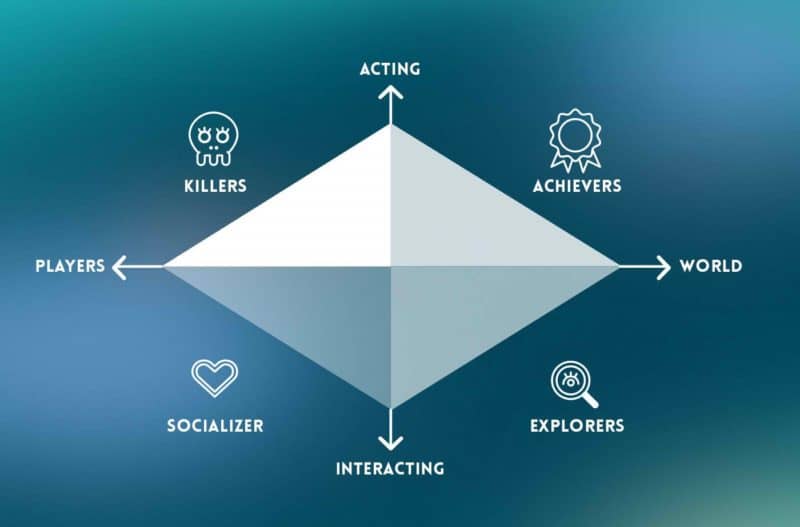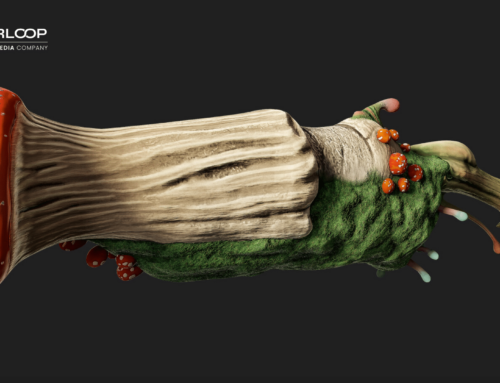Psychology plays an important part in understanding good game design. When looking to understand user psychology to design better product experiences, one of the richest sources of knowledge exists within the game design world. Game designers have been refining their techniques for decades to build ever more engaging and enjoyable experiences that drive specific player behavior. Their techniques are rooted in a deep understanding of player psychology and have built an incredible set of mechanics that they repeatedly leverage to design addicting games.
Today I wanted to provide an overview of some of the tenants of game design and particular game mechanics that can be leveraged to drive user behavior in any digital product.
1. Motivation
Game design always starts with an understanding of player motivation. Motivation ultimately breaks down into two categories: intrinsic and extrinsic motivation. Intrinsic motivation drives someone to perform a task for the enjoyment of the task itself. Games can really address intrinsic needs we have as human beings. Being able to make our own choices in life can help self-esteem, makes us feel happier and motivates us, for example using a good game economy desing. Incorporating that thinking into the design of a game, through things like player choice, will really improve the experience for the game player. And it’s satisfying needs rather than wants; those intrinsic needs.
Extrinsic motivation, on the other hand, drives someone to perform a task simply for an external reward or to avoid punishment. Extrinsic motivation is what game designers take advantage of to design enjoyable games and we’ll see exactly how they do so through a variety of game mechanics.
2. Player Types
Beyond simple motivation, game designers recognize that players come to a game with their own personality types seeking different kinds of enjoyment. It’s important to recognize this and creates experiences that allow each of the player types to thrive in the game. Player types are classically divided into four categories:
Socializers
Enjoy interacting with other players, and on some occasions, computer-controlled characters with personality. The game is merely a tool they use to meet others in-game or outside of it.
Explorers
Enjoy discovering areas, creating maps and learning about hidden places. They love to take their time to explore new areas and look around at their own pace.
Achievers
Enjoy gaining points, levels, equipment and other concrete measurements of succeeding in a game. They will go to great lengths to achieve rewards that confer minimal gameplay benefit simply for the prestige of having it.
Killers
Enjoy competition with other players and are there to win against their peers.
3. Game Mechanics
By understanding the different player types within your game, a game designer can build experiences that create extrinsic motivation for each of these player types. Game designers have established a set of best practices for doing so, which manifest in individual game mechanics they choose to leverage to drive enjoyment and desired behavior out of their users.
Let’s take a look at the popular game mechanics:
Achievement
Achievements are, in short, a representation of a specific accomplishment. In some cases, they will give you something that helps you progress in the game. In other cases, they’re just a great way for you to brag to your fellow gamers about your accomplishments. But why do people love achievements? How do they drag us even further into our virtual experience?
We have all of these needs in our lives. As life goes forward, the needs that we have become much more complex in nature and they also become much more difficult to attain. We feel accomplished when we ensure that these needs are taken care of; we feel as if we have achieved something in our lives.
Achievement provides you little “bread crumbs” that tempt you to come back and achieve those things. Some of them may seem trivial; others are incredibly difficult. Either way, you feel as if you have accomplished something, and the need for esteem has been fulfilled by the achievement system.
Loss Aversion
Loss aversion describes how people are intrinsically afraid of losses when they choose between probabilistic alternatives that involve risk. Basically, instead of looking at the “big picture” or the final outcome, we look at each loss as its own event, which makes those losses irritate us more. We dislike losing more than we enjoy winning.
Prospect theory says that there are two stages in the decision process: editing and evaluating. During the editing part of the decision making process, people will look at their choices and then set a goal or reference point. Then, they will look at that point during every event; in relation to that reference point, they call the negative outcomes “losses” and the positive outcomes “gains.”
In the evaluation phase of decision, people will choose what they perceive to be the best option; this is usually the option with the most utility, which is based on the potential outcomes and their respective probabilities when it comes to obtaining that outcome.
The idea of losing everything has more weight than the potential amount that he could win on this particular hand.
Progression
The progression mechanic displays success granularly and is measured through the process of completing itemized tasks.
Leveling up your player from 1 to 60 is the classic example of the progression mechanic. Any kind of progress bar you create in an product or service is how this often manifests outside of games.
Collection
The collection mechanic enables players to create a collection of items, whether they are achievements, resources, or anything else in the game.
Collecting resources and badges are the classic game examples of this. The central action on Pinterest of pinning various visuals into your pin-board is also a great example of the collection mechanic at work.
Blissful Productivity
The blissful productivity mechanic takes advantage of the idea that playing a game can make you happier working hard, than you would be relaxing. Essentially, we’re optimized as human beings by working hard, and doing meaningful and rewarding work.
Grinding in WoW is the classic example of blissful productivity. Oftentimes when we are building app experiences we try to make things as easy as possible to avoid our users having to do work. But what’s equally important is enabling experiences that get them in a state of blissful productivity, encouraging them to do work in our apps quite willingly. It still amazes me the relatively small set of contributors that maintain all of Wikipedia, a great example of blissful productivity.
Ownership
The ownership mechanic allows players to control something or have it as their property, which they take pride in having.
Controlling parts of a game board or owning a vast army are game examples of this mechanic. Simply “owning” popularity by having a large digital representation of many friends is the equivalent of this on social products.
Epic Meaning
The epic meaning mechanic takes advantage of the idea that players will be highly motivated if they believe they are working to achieve something great, something awe-inspiring, something bigger than themselves.
A compelling storyline has epic meaning to many of its players, creating such deep engagement with players both inside and outside of the game. Also the repetition of story elements can help players understand what they need to do. Possibly telling the story from different sides or in different ways might reinforce the story through the repetition of hearing it; but by telling it in different ways, the player might not tire of it as soon. Repetition helps the player remember what to do and provides an opportunity to practice these actions.
When you can tie the usage of your product or service to such an epic meaning, you’ll find significantly higher motivation. Many open source developers contribute to open-source projects for this very reason.
Final Thoughts
I hope this gives you a glimpse of how game designers think through driving extrinsic motivation for their various player types through a variety of established game mechanics. Understanding the intersection between game design and psychology can not only help you make better product games, but get more out of games as a player on your own terms.
The information in this article, along with many of the others across the web touched only the surface of what is possible for the application of psychology and games. But it should give you a good place to start.
Starloop Studios is proud to be part of the Magic Media group, an international group specialising in entertainment and gaming industry services. Our wide range of offerings includes VFX, blockchain gaming, game art services, and more. Reach out today to avail of our expertise and A-Z services for your projects.





